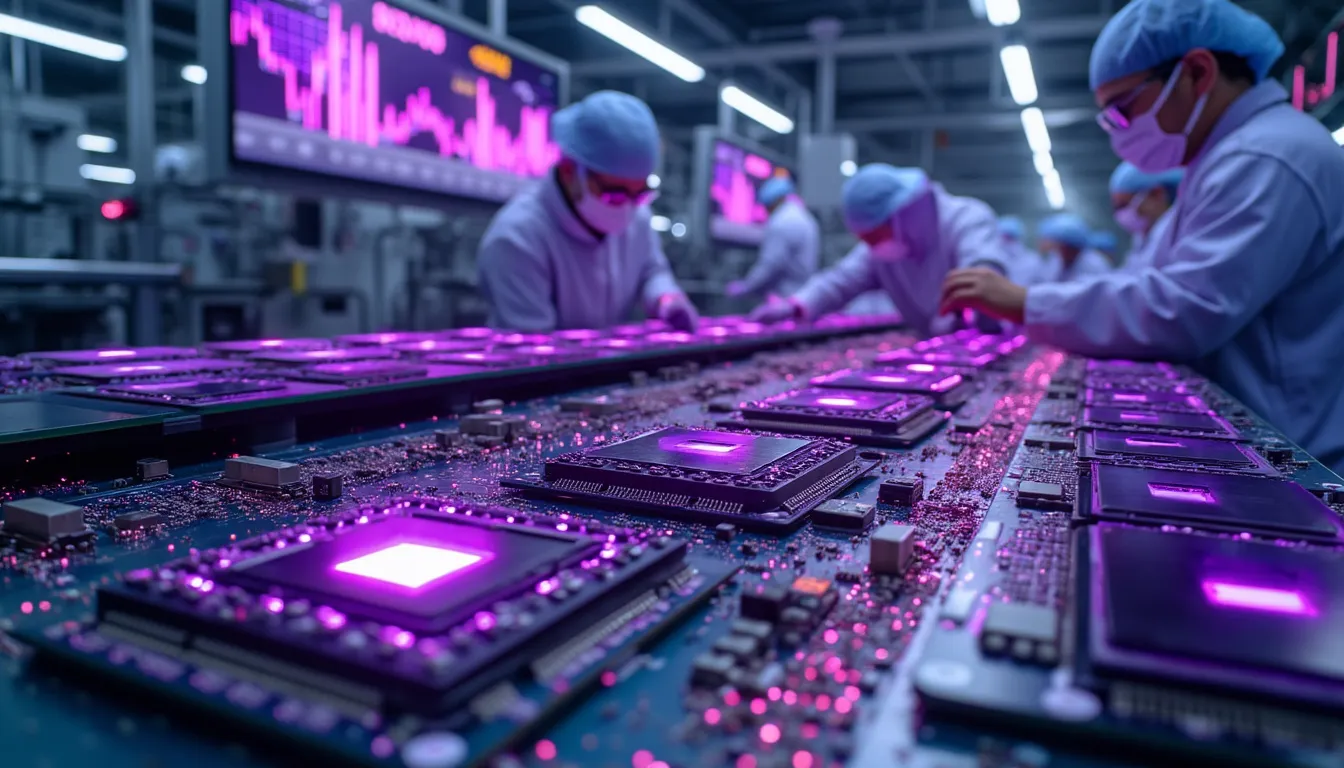A Fresh Look at RAPT Therapeutics: Analyst Upgrade Signals Shifting Biotech Sentiment
RAPT Therapeutics (RAPT), a clinical-stage immunology-focused biopharma, just drew a notable vote of confidence from Wall Street heavyweight JP Morgan. The investment bank upgraded RAPT from "Underweight" to "Neutral," and—crucially—raised its price target to $14. With shares trading at $9.80 in early pre-market action, this implies a potential upside of more than 43%. For investors in the volatile biotech sector, analyst upgrades like this often precede momentum shifts and can be catalysts for sharp re-ratings, especially when they come from institutions with deep sector expertise.
JP Morgan’s shift is particularly meaningful given the bank’s standing in healthcare research. Their upgrade to "Neutral"—while not overtly bullish—reflects a rising floor in expectations and a turning tide in sentiment for RAPT, which has endured a turbulent year marked by heavy price swings and shifting investor confidence.
Key Takeaways
Potential Upside: JP Morgan’s $14 price target represents a 43% potential return from current levels.
Stock Performance: RAPT shares are down 15% over the last month, now hovering near technical support zones.
News Drivers: Recent media highlights include a Zacks "Strong Buy" designation and consensus targets hinting at even greater long-term upside.
Analyst Influence: JP Morgan’s upgrade adds significant institutional credibility, aligning with improving earnings expectations and momentum signals.
The Significance of JP Morgan’s Shift: What Does It Mean for RAPT?
Why JP Morgan’s Upgrade Matters
JP Morgan is known for its rigorous, data-driven approach to healthcare and biotech coverage. As one of the largest and most influential investment banks globally, its research division sets the tone for institutional sentiment and often drives buy-side flows. Upgrading RAPT from "Underweight" (a position of caution) to "Neutral" signals that downside risk has abated and that the firm sees valuation or execution risks as largely priced in. The new $14 target sets a visible anchor for market participants, especially as it comes amidst improved momentum and positive peer commentary.
"Rapt Therapeutics (RAPT) has been upgraded to a Zacks Rank #1 (Strong Buy), reflecting growing optimism about the company's earnings prospects. This might drive the stock higher in the near term."
— Zacks Investment Research, July 15, 2025
JP Morgan’s healthcare team carries considerable weight: their sector specialists are often referenced by long-only funds and hedge funds alike. A move from "Underweight" to "Neutral"—especially after a period of share price weakness—suggests the firm sees stabilization in fundamentals or a bottoming in sentiment.
RAPT Therapeutics: Business Model and Sector Positioning
RAPT Therapeutics is a clinical-stage biotech developing oral small molecule therapies targeting immune and inflammatory pathways. Its primary focus has been on oncology and inflammatory diseases, positioning it at the intersection of two of biotech’s most investable sub-sectors. As a development-stage company, RAPT’s value is tightly linked to clinical trial data, regulatory milestones, and capital markets sentiment.
Biotech as a sector has been volatile in 2025, with risk appetite subject to macro headwinds and specific drug development setbacks. RAPT’s heavy price swings—its shares have traded as high as $26.56 and as low as $5.67 in the past year—are characteristic of its peer group. However, the upgrade from JP Morgan hints at a reappraisal of risk/reward, likely recognizing a derisking event, improved trial visibility, or progress in its clinical pipeline.
Stock and Financial Performance: Volatility, Technicals, and Traction
One-Year Price Action: A Tale of Two Trends
High: $26.56 (Nov 6, 2024)
Low: $5.67 (May 15, 2025)
Current: $9.80 (July 30, 2025, pre-market)
Down 15% over the past 30 days, now trading near recent lows
Recent RSI: 55 (neutral, neither oversold nor overbought)
20-day EMA: $10.75 (stock currently below short-term trend)
RAPT’s stock has experienced 144 down days versus 103 up days in the past year—a clear sign of persistent selling pressure. Volume data shows episodes of heavy trading, with an average daily volume north of 170,000 shares, spiking to over 1.7 million on peak sessions (notably in December 2024). This volatility is typical for clinical-stage biotechs, where news flow and sentiment can swing dramatically on trial updates or analyst notes.
Technicals: Support, Resistance, and Sentiment
The current price sits just above the lower Bollinger Band ($6.39), suggesting limited further downside unless new negative news emerges. The VWAP ($12.05) and SMA 20 ($10.37) are both above the current price, indicating that RAPT is trading at a discount to recent averages—a setup that can attract value-oriented speculators following an upgrade.
Analyst Influence and Consensus: Building Institutional Confidence
How Big Firms Shape Perception
JP Morgan’s coverage is closely watched, especially in small- and mid-cap biotech. The firm’s decision to move to "Neutral" from "Underweight"—without yet turning outright bullish—signals a belief that risk/reward is now balanced. This is a meaningful shift for investors who rely on analyst coverage for risk calibration.
Consensus data from Zacks and other research sources have also tilted bullish:
RAPT was just added to Zacks’ #1 Rank (Strong Buy) momentum list on July 15, 2025.
A July 15th Zacks headline asked: “Does RAPT have the potential to rally 183% as Wall Street analysts expect?”
While consensus targets are sometimes aspirational, the confluence of major upgrades—especially from both Zacks and JP Morgan—creates a tailwind for sentiment and can attract institutional capital off the sidelines.
Analyst Confidence and Background:
JP Morgan’s coverage is deeply rooted in healthcare expertise and sector leadership.
Recent News Flow: Catalysts and Changing Narrative
Notable Headlines (July 2025)
July 15: Zacks upgrades RAPT to "Strong Buy," citing optimism about earnings prospects and calling out near-term upside potential.
July 15: RAPT highlighted as a “Best Momentum Stock to Buy.”
July 15: Zacks flags RAPT’s consensus price target, implying potential for a 183% rally if positive catalysts emerge.
These headlines reflect a narrative inflection point. The strong buy momentum and optimism around earnings suggest that institutional investors could be positioning ahead of anticipated news—possibly related to clinical trial milestones or regulatory updates.
What Does a 43% Upside Mean for Investors?
Risk/Reward at Play
JP Morgan’s $14 target—set against a $9.80 pre-market quote—translates to a 43% potential return. This is a meaningful cushion for risk-tolerant investors, especially those familiar with the binary outcomes of biotech R&D. For investors who can stomach volatility and believe in RAPT’s pipeline, the upgrade offers both a psychological floor and a visible target for the next leg higher.
However, investors must remain attuned to the sector’s inherent risks: delays in clinical trials, negative data, or macro-driven risk-off environments can quickly erode gains. But with momentum indicators turning, sell-side sentiment improving, and technicals showing stabilization, the current setup is among the more attractive risk/reward profiles for small-cap biotech in mid-2025.
Beyond the Upgrade: What to Watch Next
Clinical Milestones: Upcoming trial results or regulatory updates could be the next major catalyst.
Volume Trends: Watch for sustained increases in trading volume—often a sign that institutional money is flowing in post-upgrade.
Sector Sentiment: Broader biotech sentiment remains fragile; sector-wide risk-off moves could still drag RAPT lower, though the upgrade provides a buffer.
Peer Comparisons: RAPT’s performance relative to other clinical-stage immunology plays could set the tone for further analyst action.
Final Word
JP Morgan’s upgrade of RAPT to "Neutral" with a $14 target is a noteworthy pivot for a stock that has spent much of the past year under pressure. With technical support forming, momentum themes building, and institutional coverage turning more constructive, investors should keep RAPT on the radar—especially those seeking asymmetric return profiles in biotech’s risk zone.

.svg)
.svg)
.svg)
.svg)

.svg)

.svg)
















